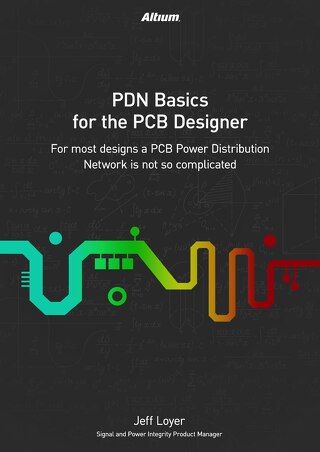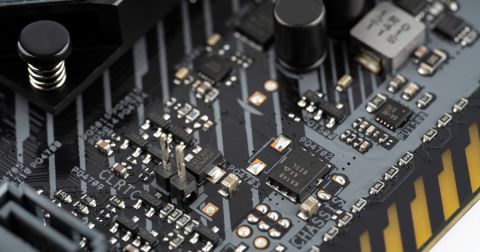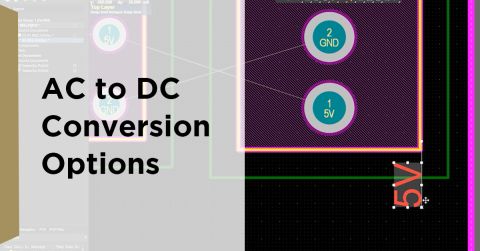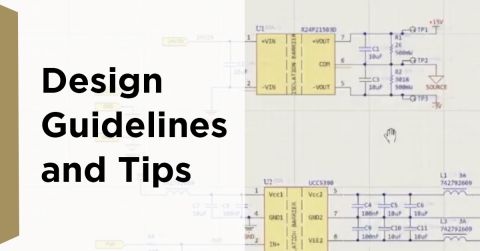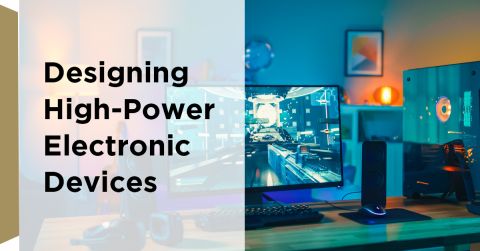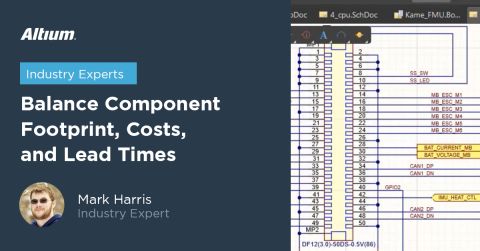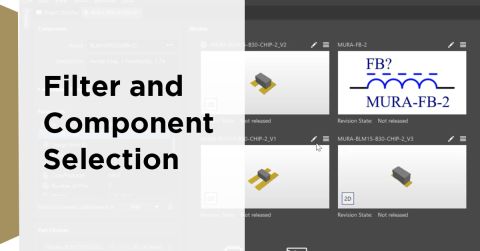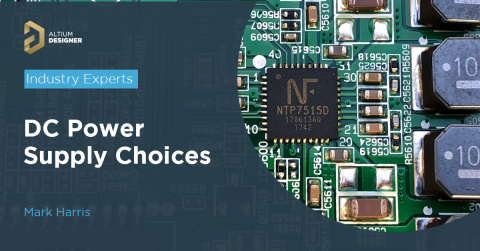Power Supplies - Buy, Outsource, or Create Electronics Designs

As engineers, we make decisions about whether to buy or build all the time. If we need an amplifier or some kind of signal processing circuit, we look for ready-made integrated circuits (ICs) with high-level functionality, respectable performance, and reasonable price. However, if there isn’t an obvious “buy” solution, we split our circuit into smaller segments and design at a more localized level. But, we will only go so far; we don’t choose to “make” resistors, capacitors, transistors, diodes, or chips; we use pre-built components from reputable manufacturers sold through a recognized supply chain and preferably, with second or multiple alternative sources. In other words, we “buy” at the lowest level but, if we can economically buy at a higher level, then we will do so. But what about power supplies? In this article, we're going to answer "should I outsource my electronics?"
Power supply - Initial Considerations
Power supplies are no different, but there can be special considerations because, in many cases, if the supply fails, then so does our product. Of course, the same can be said for a product that relies on a central microprocessor or controller, but these items are usually sold in millions and are well-proven. They are also very precisely defined regarding how they interface and what voltage supplies they need to perform their vital role. With a power supply, the electrical environment is far less certain, and the power supply is likely to be handling much larger voltages and currents than all other components in our product. In other words, there is more stress on a power supply compared to most of the other parts of our design. This article hopes to address the most pertinent issues to consider and, in several places, adopts a checklist format for you to use.
Off-The-Shelf (OTS) Power Supply
If you can find an OTS power supply that appears to meet your needs, you should then consider the answers to the following questions before you choose to utilize it:
- Will the power supply be reliable?
- Will it continue to operate at the expected extremes of temperature, input voltage, and load range for the application? (Also known as 8-corner testing)
- Does it have a mean time between failure (MTBF) figure that provides clues about its longevity?
- Can the MTBF figure be substantiated by component inspection?
- Electrolytic capacitors are a good indicator of product life expectancy
- Power diodes and their possible peak circuit currents can reveal shortcomings
- The quality of connectors can give a warm feeling that a part will be reliable
- Does the OTS design have the main controller IC that can be researched?
- In short, does the OTS supply look and feel like it’s a quality product?
- Does the supplier have documented evidence of reliability?
- Does the datasheet provide information about different types of loading conditions?
- Is customer feedback information available?
- Is the supplier able to provide a comprehensive failure diagnosis facility?
- Is it completely fit for purpose regarding performance and functionality?
- Is the DC output level accuracy what is needed (including any drift)?
- Are DC output ripple levels acceptable (possibly information about different load scenarios)?
- Is the load transient response OK?
- Does it use current limiting circuits, and is foldback current limiting required?
- Do you need it to have an independent secondary overvoltage crowbar circuit?
- Are radiated and conducted electromagnetic emission testing graphs and information available?
- How much headroom was there between pass and fail?
- Do the Electromagnetic Compatibility (EMC) test results cover a range of power/load scenarios?
- How resilient is the unit to supply line transients and drop-outs?
- Will the unit still be available throughout the expected production lifetime of the product?
- Does the supplier have a good reputation, and can their data be relied upon?
- Can the supplier be trusted not to make their product obsolete in a couple of years?
- Are there similar units from alternative suppliers available to switch to if there is a supply shortage?
- What are the spare power reserves considered to be required to meet future needs?
- A little bit of guesswork is required here, but it is still important to consider
- Does the unit have all the required regulatory approvals for the product’s target markets?
- For example, Automotive, Medical, or Railway products, among others, have specific regulatory approval requirements
- Is there enough space within the product’s planned/desired board area/enclosure volume to fit it?
- Does it require a “module” to enable it to be fitted directly to the main printed circuit board (PCB)?
- Disadvantage - returning faulty goods is problematic
- Advantage - smaller profile and potentially lower cost
- Could the unit interfere with the other parts of the circuit (heat and noise)?
- Would the performance of a goods-in-circuit test be needed (thus adding to our overall cost)?
- Is the price of the OTS unit compatible with the budgetary requirements?
If any of the above fall short of your expectations, you might consider moving to the next stage.
Changing the Product Design to Suit an OTS Power Supply
If you can’t find an OTS power supply, you might need to rethink your approach:
- Can the product design be altered to make the purchasing of an OTS power supply viable?
- Can some power supply functionality be devolved into the main product PCB?
- Can a negative power rail be eliminated by using, for example, different op-amps?
- Can some power rails be more easily generated locally with simple linear voltage regulators?
- Could the circuit performance benefit from a more point-of-load approach?
- Reducing the number of individual circuit interconnections is generally recognized as a benefit because overall reliability can be improved, and the “connection sub-assembly” can be more likely bought as an OTS item
- Should bespoke designed straightforward, single-output “front-end” supply teeing-off into a DC-regulator sub-assembly be used?
- Space limitations may not permit this
- Budgetary restrictions may not allow this (another cable sub-assembly)
If you can make changes that facilitate the purchase of an OTS supply, then you would still need to go back and examine all the OTS considerations listed in the previous section. If your expectations are still not met, you should consider some form of a custom supply solution.
Considering a Custom Supply Solution
If you can’t modify your design to suit an OTS power supply, do you undertake a custom-designed supply? There are several OTS providers that will offer this service, but you should consider the following points first:
- It means spending money for a supplier to “develop the solution”
- This route limits the possibility of an alternative product source (without spending more money)
- It places a high reliance on the supplier staying in business
- Is it possible to “acquire” the build rights to the design?
- There will be very little leverage on the supplier’s price (because it’s a single source)
- Will the power supply remain reliable (same as OTS comments, see above)?
- Will the power supply remain fit for purpose (same as OTS comments)?
- Who will actually own the design? This needs to be cleared up at the beginning of the process
- Who is allowed to make design changes?
- Can the supplier be influenced to make changes if a particular component is found to be somewhat vulnerable?
- Will the supplier provide notification of all design/component source changes?
- Would you still have the in-house ability to analyze proposed changes, and do you understand what this entails?
- Can simple in-house circuit changes be made?
- Does the supplier agreement allow this?
- Would any changes infringe on the product guarantees?
- Can the design be tweaked for some markets, and it might be more cost-effective to do this in-house rather than back at the source?
- Is this solution (and cost of development) likely to meet the budgetary requirements?
If your expectations are still not met, then you should consider a custom design solution.
A Custom Design Solution
Using an External Design Expert
- Who should be picked, and how is this person/party identified?
- What are the external design undertakings and development costs?
- What confidence do you have that what they say they know and what they can do is realistic?
- Can they be relied upon to deliver a good power supply design?
- Have they acquired a decent reputation for this type of work?
- How long might this phase add to the overall product development timescales?
- Are agreed milestones defined and prototype deliverables nailed down?
- Are the regulatory/approval/agency costs known? It’s unlikely that external designers will be willing to guarantee these costs, so there is a need to know how to ensure that costs will not end up spirally out of control due to external designer mistakes.
- Will the externally generated design information allow the support of future changes?
- Will these documents be compatible with any in-house ECAD software?
- Are the output documents needed from the external designer nailed down?
- Can potential component obsolescence issues be analyzed as the design evolves?
- In other words, how easy is it to work alongside the external person/party?
- Can potential unit costs be analyzed as the design evolves?
- Is this route likely to produce a solution that meets the budgetary requirements?
An external designer’s progress should be “managed” and, right from the start, the route they take should be agreed on. This is called “project management,” and usually, with an outsource electronics design, this isn’t as effective as managing “internal” resources. Most of the bullet points listed in the next section are also applicable because, no matter how you look at it, you (as the seller of your product) are legally responsible for the outsourcing design, and unless you outsource this function, you “become” the outsourcing authority.
Design a Solution Using In-House Resources
- Are chip supplier reference designs available?
- These days they are common, so use them (at least as a starting point)
- Can the reference design be also simulated? Are models available?
- Are evaluation boards available?
- These are also common but, if not, build a prototype based on a reference design
- Do the IC suppliers provide online tools that can be used?
- This is often something that is available but needs researching
- How long will this add to product development?
- Are adequate in-house design resources available (some functions can be subcontracted)?
- Analog and circuit design expertise?
- Simulation expertise (circuit, noise, and Monte Carlo analysis)?
- Magnetic expertise - can a transformer be designed if needed?
- PCB expertise?
- EMC expertise?
- Failure Modes and Effects Analysis (FMEA) skills?
- Reliability and MTBF analysis skills?
- Are the in-house design facilities available?
- Do you need to hire someone working in-house?
- Is electronic computer-aided design (ECAD) software available for schematics and PCB layout?
- Do you need to purchase/hire test equipment?
- Are suitable environmental chambers for soak testing and 8-corner testing available?
- Are the legislative requirements understood?
- Is additional training required?
- Are the regulatory/approval/agency testing/certification costs known?
- Are the in-house quality systems adequate?
- Are the design-input requirements fully defined?
- Do you know how to verify the design?
- Do you know how to validate the design?
- Can you seek a second design opinion (usually a good idea)?
- Have all failure modes been identified and considered?
- Have you analyzed potential component obsolescence?
- Which important parts have second sources, and which don’t?
- Is this route likely to produce a solution that meets the budgetary requirements?
If you have reached this point, you must ask yourself the question; do the foreseeable product volumes justify an in-house design and all that it entails regarding non-recurring expenses (NRE)and engineering effort? Is there no other way around the problem other than an in-house design?
We mention this because undertaking a design for a power supply is not an inexpensive process. There are plenty of hidden costs; regulatory/approval/agency costs are among the more conspicuous areas.
The Hidden Costs
Making a Bad Decision to Buy Rather Than to Build
This is probably the least likely scenario, but it can and will happen when you don’t correctly align your product’s technical requirements with the power supply being considered. It can also happen if you misunderstand your market and find that the power supply is unsuitable for use in some countries. These countries can have considerable disruptions in AC power and, for significant periods, operate below the “universal” recognized lower AC limit of 85 volts and 47 Hz. Some regions can have such significant imbalances in their three-phase supplies that, for the single-phase supply being used, more than 265 volts AC can be present for lengthy periods.
Being naive in trusting the supplier’s reputation:
- Not reading the fine detail and making assumptions that the specification looks good when you should really be asking this question: what is supplier A’s data sheet not telling you that supplier B’s datasheet does tell you?
- Make data sheet comparisons, and develop a scoring matrix
- Be a detective and investigate
- Get a second person to review your technical reasoning before you commit to an OTS product
- Perform your own in-house tests to validate the data sheets of your top candidate products
Underestimating your requirements. If you find that the previously acceptable ripple voltage will cause product performance glitches down the line, it may be hard to shoe-horn in extra filtering. Also, it’s probably not something that an OTS supplier will be interested in helping you correct.
Finding that you actually need an independent output over-voltage protection circuit (aka a crowbar circuit) late in the day can be a showstopper and an embarrassment. Or, discovering that the recoil transient from a load being removed causes an output voltage glitch that destroys your prized (and costly) silicon is not good when an OTS decision has already been made.
Making a Bad Decision to Build Rather Than to Buy
This is where things can go badly wrong and, for example, almost always will go wrong when it comes to the estimation of agency/approval costs or private EMC testing costs. You may have previously decided to build because of the cost; let’s not forget that. Let’s not also forget that you chose not to give money to a custom power supply house (that could have supplied you with a product with acceptable performance, documentation, and support) because of cost considerations. Money is typically the driving force behind this decision.
You chose the technically more challenging route and, if your design fails the agency or private testing, you will have to spend the same money again for re-testing after you have fixed the problem. If, at the end of the day, the agency and private testing costs are three times higher than what you estimated initially, does this make going down the “design it yourself” route appear to be a bad decision? In other words, when choosing the design route, make sure you have a really good case to justify it.
There are plenty of other hidden costs when taking the design route. The most obvious and well-trodden is timescale; it nearly always takes longer to get to where you want to be than what you might have estimated initially. You won’t be alone in this; it is a commonplace issue. However, if your decision to build was based on meeting tight schedules (therefore, low development costs), you might choose to revisit that decision.
Not being as much of a design expert as you thought you were is also a problem. Underestimating how achievable a performance goal might be and then having to hire contract design labor to get the job done proficiently is not unheard of—which adds more cost.
Not correctly checking that a critical component in the design might become obsolete sooner than expected is also a recurring problem seen in the industry. When making a design, try and ensure that any critical single-source components can be easily swapped-out (with minor additional design work, of course) without wholesale redesign. Easier said than done, of course, but if you set about the design methodically and choose the “right” circuit topology for the power rating, it becomes easier.
Contrast this with a design that was initially a flyback topology but evolved (due to requirement changes) in such a way that a forward converter would have been a better initial choice. You might have been lucky in that the original flyback controller chip could be pushed towards, for example, 200 watts. However, if that chip goes obsolete, finding an alternative may prove really difficult - it could mean re-engineering the design to a different topology that requires a totally different circuit. You would almost be starting again from scratch, which would require you to put your entire product through all the expensive certifications and testing again.
Would you like to find out more about how Altium Designer® can help you with your next PCB design? Talk to an expert at Altium.
